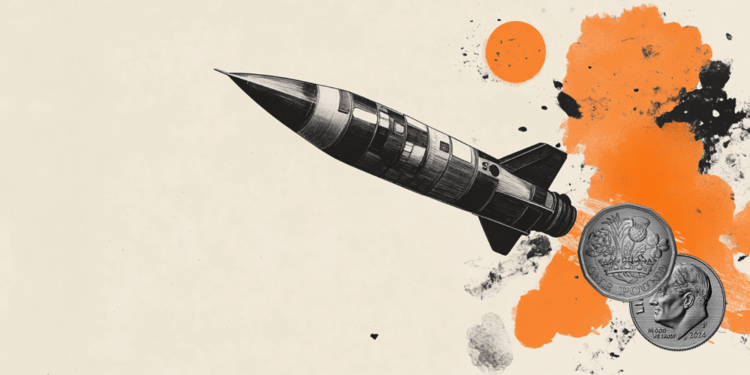- The Dow Jones rises on Monday ahead of the Fed's interest rate announcement on Wednesday.
- Stocks shrug off lower June rate bets.
- The Fed's dot chart update and US PMI numbers will also be released this week.
The industrial index Dow Jones (DJIA) rose on Monday as investors turned to risk again to kick off a busy trading week focused on central banks. US stocks rise across the board and major indices are bolstered by a rally in telecommunications.
The Federal Reserve's (Fed) latest rate call is scheduled for Wednesday, and the update of the Fed's interest rate expectations dot chart will attract much of investor attention as markets continue to deal with to specify when the US central bank will cut rates. Money markets have continued to trim bets on a 25 basis point rate cut in June, but stocks are shrugging off the shift in sentiment to tilt to the bullish side on Monday. Rate futures are priced at a near 50% chance of no rate cut in June, up from a near 70% chance of a 25 basis point cut just a week ago.
Dow Jones News
At the time of writing, the Dow Jones industrial average is in positive territory, up about a third of a percentage point on Monday, but lagging behind its peers. The S&P 500 has gained about eight tenths and the Nasdaq Composite has risen more than 1%.
The communication services sector has risen steadily on the day, with a rebound of almost 3% on Monday. Of the eleven major US equity sectors, all are in the green to begin the new trading week.
Walt Disney Co. (DIS) leads the DJIA gains, rising 1.7% by midday Monday to trade near $114.00. Salesforce Inc. (CRM), Apple Inc. (AAPL) and Caterpillar Inc. (CAT) are in a three-way race for second place, with all three gaining about 1.5% on Monday. On the downside, Boeing Co. (BA) continues to lose weight, declining another 1.4% on Monday to trade at $180.00 per share.
Dow Jones Technical Outlook
Despite Monday's gains, the Dow Jones Industrial Average is trading within last Friday's technical limits, hovering around the 38,880.00 level as near-term momentum finds an intraday price floor near 38,800.00. .
Despite the day's bullish tilt, the DJIA remains below recent highs, with the index still down almost a full percentage from last week's high bids near 39,230.00.
Dow Jones 5-Minute Chart
Frequently Asked Questions About the Dow Jones
What is the Dow Jones?
The Dow Jones Industrial Average, one of the world's oldest stock indices, is made up of the 30 most traded securities in the United States. The index is weighted by price rather than capitalization. It is calculated by adding the prices of the securities that comprise it and dividing them by a factor, currently 0.152. The index was founded by Charles Dow, also founder of the Wall Street Journal. In recent years it has been criticized for not being sufficiently representative, as it only tracks 30 companies, unlike broader indices such as the S& P 500.
What factors influence the Dow Jones index?
There are many factors that drive the Dow Jones Industrial Average (DJIA). The main one is the aggregate performance of its component companies, revealed in quarterly corporate earnings reports. US and global macroeconomic data also contribute, influencing investor sentiment. The level of interest rates, set by the Federal Reserve (Fed), also influences the DJIA, as it affects the cost of credit, on which many companies largely depend. Therefore, inflation can be a determining factor, as well as other parameters that influence the decisions of the Federal Reserve.
What is the Dow theory?
The Dow Theory is a method for identifying the main trend of the stock market developed by Charles Dow. A key step is to compare the direction of the Dow Jones Industrial Average (DJIA) and the Dow Jones Transportation Average (DJTA) and only follow trends where both are moving in the same direction. Volume is a confirmation criterion. The theory uses elements of maximum and minimum analysis. The Dow theory proposes three phases of the trend: accumulation, when the smart money begins to buy or sell; public participation, when the general public joins the trend; and distribution, when the smart money abandons the trend.
How can I trade with the DJIA?
There are several ways to trade the DJIA. One of them is to use ETFs that allow investors to trade the DJIA as a single security, instead of having to buy shares of the 30 companies that comprise it. A prominent example is the SPDR Dow Jones Industrial Average ETF (DIA). Futures contracts on the DJIA allow traders to speculate on the future value of the index, and options provide the right, but not the obligation, to buy or sell the index at a predetermined price in the future. Mutual funds allow investors to purchase a portion of a diversified portfolio of DJIA securities, providing exposure to the global index.
Source: Fx Street
I am Joshua Winder, a senior-level journalist and editor at World Stock Market. I specialize in covering news related to the stock market and economic trends. With more than 8 years of experience in this field, I have become an expert in financial reporting.







